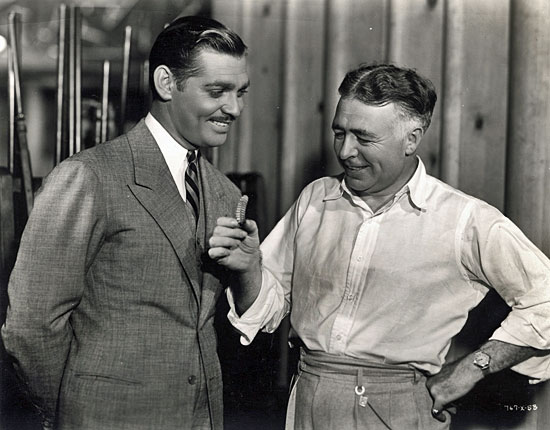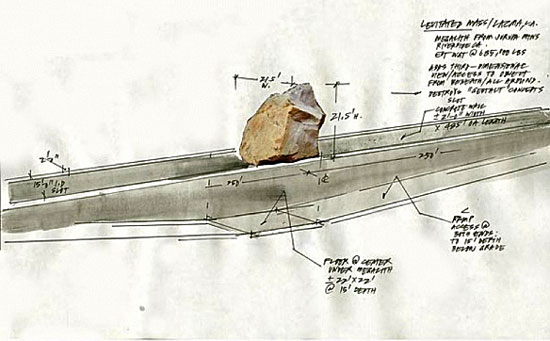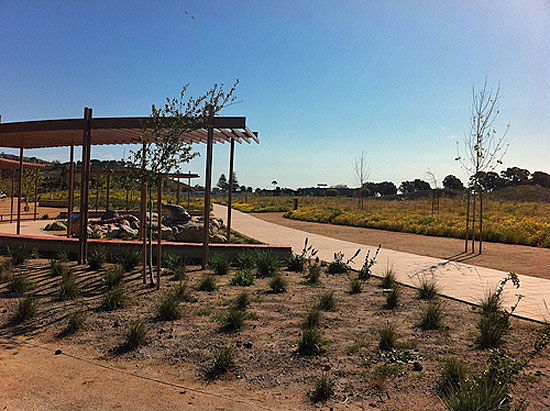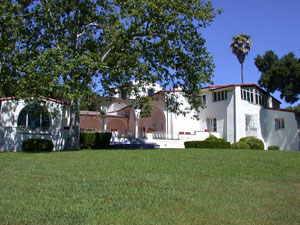County gets a new bike plan at last
February 28, 2012
After 37 years, multiple revisions and a flurry of last-minute additions, Los Angeles County finally has a new bicycle master plan intended to create a more cycling-friendly environment in unincorporated areas over the next two decades.
The Bicycle Master Plan, adopted by the Board of Supervisors on a 4-0 vote, with Supervisor Michael D. Antonovich abstaining, represents the first overhaul of county bike policies in place since 1975.
The new bike master plan “will give us a real road map, no pun intended, to take our bicycle planning and implementation to a new level,” Board Chairman Zev Yaroslavsky said.
When fully realized by 2032, the plan will vastly expand the existing 144-mile network, adding 832 miles of new bikeways in unincorporated areas at an estimated cost of $331 million. Significantly, it also formally signals that the county wants to become an innovator in incorporating bikeway facilities into a metropolis known worldwide for its automobile-centric ways.
Work on the plan started in 2008, said Mary Reyes of the Department of Public Works, which developed the biking blueprint along with other county departments including Regional Planning and Public Health. She said it was created against the backdrop of a national movement increasingly championing bicycling as an important and desirable transportation alternative in a society battling problems ranging from high gas prices to chronic diseases driven by physical inactivity.
Los Angeles cycling advocates, initially discouraged by what they saw as a business-as-usual approach in the plan’s early stages, praised the county on Tuesday for making a sharp U-turn toward innovation at the end of the process.
County staffers have “risen to the challenge to make this a really visionary plan,” said Alexis Lantz, planning and policy director for the Los Angeles County Bicycle Coalition.
Another activist, USC cycling team coach Eric Bruins, said the plan could be “a model for the rest of the country.” The Board of Supervisors, acting on a motion by Yaroslavsky, directed county bicycle planners in November to come up with a revised master plan that included forward-looking features such as painted bike lanes and “cycle tracks,” in which a barrier separates bike lanes from car traffic.
On Tuesday, there was more fine-tuning to do. A motion by Yaroslavsky and Supervisor Don Knabe changed the wording of the plan to mandate that one kind of innovative treatment—the “bicycle boulevard,” usually designated on a less-busy local or residential street—include traffic-slowing measures as a matter of course.
The plan calls for creating 22.8 miles of such bike boulevards. Traffic-calming measures, such as speed bumps, have been promoted by cycling advocates, who say they are essential to making riders of all ages and abilities, especially families and children, feel safe and comfortable taking to the boulevards. Specific designs for the boulevards will be developed as the plan rolls out, with individual neighborhoods providing input on how the routes will work in their areas.
In addition to bike boulevards, the new plan features almost 274 miles of bike lanes and nearly 72 miles of dedicated bike paths.
Most of the network, however, is devoted to some 463 miles’ worth of “Class III” bike routes—the lowest class of bikeway, with signage but no dedicated space for cyclists.
Some of those Class III routes could be upgraded to full-fledged bike lanes under the Yaroslavsky-Knabe motion, which allows engineers to make the change with a minimum of red tape in suitable locations.
Another motion, by Supervisor Mark Ridley-Thomas, directed county officials to come up with ways to incorporate bike parking at county facilities wherever possible. It also asked for a report on the 10 unincorporated areas with the highest obesity rates, and for implementation and funding plans to get bikeways going in those and other areas. And it directed that a recommended bike route along the Sepulveda Channel in Mar Vista be deleted from the plan. Some in the neighborhood have expressed concerns about the bikeway’s potential for bringing crime into their area.
Antonovich, who abstained from the vote, asked a series of questions about how the bikeways would be funded and said he was concerned about using county road construction funds or Measure R revenue to create the network.
Pat DeChellis, deputy director of Public Works, said road construction funds by law may only be used for small “incidental expenses” such as signs or painting new bike lanes when a road project is being built or repaired. “The vast majority of the expenses, the 300-plus millions of dollars, are going to come from federal, state and regional grant sources,” DeChellis said, with the county providing varying levels of matching funds.
In the bigger scheme of things, the funding required to build the bike network is reasonable, said Lantz, of the bicycle coalition. “This plan is $331 million to complete the entire thing. That’s only a third of the 405 widening project,” she said. “So while it sounds like a lot of money, it’s a lot less than what we’re spending right now to expand our highway system.”
Posted 2/28/12
LACMA “Rock” to roll next week 2
February 27, 2012
Los Angeles art fans may feel like they’ve been waiting since the Stone Age, but it looks like that 340-ton boulder heading for LACMA could be on the road as early as Tuesday, if not the following week.
The Rock, as it has come to be known, is to be the centerpiece of a massive outdoor installation by artist Michael Heizer, who purchased it seven years ago from a Riverside County quarry. It has been waiting there ever since while museum officials worked with a heavy-haul transport company to negotiate its passage from the Inland Empire to the Mid-Wilshire District.
“Nothing is set in stone yet, no pun intended,” said LACMA consultant Meg Spieker Thomas, but all signs are that The Rock’s departure is nearing.
It was scheduled to roll last August, but its progress has been fraught with postponements. First its transporter had to be custom built and then its movers had to plot a surface-street route that could handle a hunk of granite the size of a 2-story building.
The route finally was settled back in October, but then problems arose as word leaked that this would be an unconventional shipment, and the haulers began to negotiate permits with the 21 cities and four counties through which The Rock required passage. Most communities were accommodating, but a handful raised multiple issues. At various points, intervention was required from members of the Board of Supervisors.
Despite the fact that most of the roads being used are longstanding truck routes, Chino insisted that blueprints and repair records be extensively researched to prove that the transporter wouldn’t damage water pipes serving Chino Hills homeowners. Lakewood and Long Beach called for tree trimming to ensure the transporter wouldn’t sideswipe their landscapes. Diamond Bar and Chino demanded that core samples of their pavement be tested. Gardena wanted special assurances that if its street lights were damaged the city would be reimbursed.
“Heavy hauls move through these cities every night,” Thomas said. “People failed to understand that this one was just getting special attention because of the art factor and the publicity.”
But by this week, most, if not all, concerns had been addressed and state permits had been issued for a Tuesday, February 28, departure. Haulers have already shrink-wrapped the rock and loaded it onto its special transporter. Should some snag arise, preventing a Tuesday departure, Thomas said the move would probably be rescheduled for the following week.
The rock will travel only at night, escorted by eight California Highway Patrol officers. During the day, it will be parked and watched over by four security guards. Its layovers, with one possible exception, will last only a day and most will be in the middle of various roadways, with space on either side for traffic to detour around it. The epic journey is expected to take nine or ten nights, traveling at less than 10 miles per hour.
The public will be able to track its progress via LACMA’s web site or a special museum hotline that will be made public as soon as The Rock hits the road.
Updated 2/25/12
It’s official. LACMA announced Friday that The Rock will roll Tuesday at 11 p.m.
Transportation, made possible by Hanjin Shipping, will take about 11 nights, covering 22 cities and four counties. The heavier half of a massive outdoor artwork, “Levitated Mass” by Michael Heizer, the 340-ton boulder will eventually be positioned over a 456-foot-long concrete slot on the LACMA campus. As visitors walk through the slot, the boulder will appear to be levitating.
It is scheduled to arrive at LACMA in the wee hours of Saturday, March 10, and open to the public in the late spring or early summer. Those who want to follow its progress can check LACMA’s Rock hotline at 323-857-6262 for questions, or click here for updates. Want to check out the route? Click here.
A park’s legacy grows in Malibu
February 27, 2012
Legacy Park in Malibu has wildlife, sculptures, outdoor classrooms and five coastal habitats. But to understand why Los Angeles County’s most innovative new recreational area recently racked up its sixth award in 16 months of existence, you have to look deeper—underground, in fact.
Beneath its meandering walkways and drought-tolerant plantings, the 15-acre central park at Cross Creek Road and Pacific Coast Highway is actually a state-of-the-art system for capturing and cleaning urban runoff that would otherwise course to the ocean, carrying bacteria and trash.
Hidden pipes and filters, working in tandem with the park’s landscaping and Malibu’s existing storm water treatment facility, have trapped and decontaminated tens of millions of gallons of toxic storm water since the park opened in October, 2010.
“It’s pretty unique,” says Malibu City Manager Jim Thorsen, noting that the park was just named the American Society of Civil Engineers’ 2011 Project of the Year for California—the latest in a long string of accolades.
“I don’t know of any other places that not only capture and treat their storm water, but then build a park around it and make it possible for visitors to come in and learn.”
The park grew out of longstanding concerns about bacterial contamination from runoff at Malibu Creek, Malibu Lagoon and Surfrider Beach. When winter storms strike in Southern California, the rains carry chemicals and debris into the Santa Monica Bay from as far away as Thousand Oaks and the Santa Monica Mountains, poisoning the ocean and polluting the beach.
Under pressure to comply with clean water mandates, the city bought a vacant lot and—with $13 million in funding amassed from private and public donors, including $700,000 in Proposition A park funds—began turning the dusty tract into what Thorsen has dubbed “an environmental cleaning machine.”
Runoff from some 337 surrounding acres flows into the park via three major storm drains, then is filtered through a system of screens to catch plastic bags, paper cups and other litter. Then the water runs through more filters to a 2.6 million gallon retention pond at the park’s center, where it sits while contaminants settle at the bottom of a natural sedimentation basin.
Finally, the water is piped to the other side of Civic Center Way, where the city’s storm water treatment facility can clean and disinfect it with ozone. Then the cleaned water is used to irrigate the park, or, on rare occasions, is discharged back into Malibu Creek.
“What has really surprised us is how well it has functioned,” says Thorsen. “We’ve seen water go in, the pond fill, the pumps and the system work to perfection, and the water recycle back into the park. It has worked out exactly as it was supposed to work.”
Kathy Haynes, who chaired the ASCE awards committee, calls the park “an innovative example of incorporating sustainability, showing environmental responsibility and using forward thinking.”
For Thorsen, however, the reward is in the number of calls he’s been getting from developers and communities interested in similar projects, and in the public response over the past year as Legacy Park has come to life.
“It looked like a barren desert, when we first planted it,” he says, “but everyone—the people, the birds, the animals—seems to love it. I’m amazed at how much things have grown in just one year.”
Posted 2/6/12
Want to be part of the solution? Some expert tips on how you can avoid contributing to urban runoff are here.
LACMA “Rock” to roll tonight
February 23, 2012
Los Angeles art fans may feel like they’ve been waiting since the Stone Age, but it looks like that 340-ton boulder heading for LACMA could be on the road as early as Tuesday, if not the following week.
The Rock, as it has come to be known, is to be the centerpiece of a massive outdoor installation by artist Michael Heizer, who purchased it seven years ago from a Riverside County quarry. It has been waiting there ever since while museum officials worked with a heavy-haul transport company to negotiate its passage from the Inland Empire to the Mid-Wilshire District.
“Nothing is set in stone yet, no pun intended,” said LACMA consultant Meg Spieker Thomas, but all signs are that The Rock’s departure is nearing.
It was scheduled to roll last August, but its progress has been fraught with postponements. First its transporter had to be custom built and then its movers had to plot a surface-street route that could handle a hunk of granite the size of a 2-story building.
The route finally was settled back in October, but then problems arose as word leaked that this would be an unconventional shipment, and the haulers began to negotiate permits with the 21 cities and four counties through which The Rock required passage. Most communities were accommodating, but a handful raised multiple issues. At various points, intervention was required from members of the Board of Supervisors.
Despite the fact that most of the roads being used are longstanding truck routes, Chino insisted that blueprints and repair records be extensively researched to prove that the transporter wouldn’t damage water pipes serving Chino Hills homeowners. Lakewood and Long Beach called for tree trimming to ensure the transporter wouldn’t sideswipe their landscapes. Diamond Bar and Chino demanded that core samples of their pavement be tested. Gardena wanted special assurances that if its street lights were damaged the city would be reimbursed.
“Heavy hauls move through these cities every night,” Thomas said. “People failed to understand that this one was just getting special attention because of the art factor and the publicity.”
But by this week, most, if not all, concerns had been addressed and state permits had been issued for a Tuesday, February 28, departure. Haulers have already shrink-wrapped the rock and loaded it onto its special transporter. Should some snag arise, preventing a Tuesday departure, Thomas said the move would probably be rescheduled for the following week.
The rock will travel only at night, escorted by eight California Highway Patrol officers. During the day, it will be parked and watched over by four security guards. Its layovers, with one possible exception, will last only a day and most will be in the middle of various roadways, with space on either side for traffic to detour around it. The epic journey is expected to take nine or ten nights, traveling at less than 10 miles per hour.
The public will be able to track its progress via LACMA’s web site or a special museum hotline that will be made public as soon as The Rock hits the road.
Updated 2/25/12
It’s official. LACMA announced Friday that The Rock will roll Tuesday at 11 p.m.
Transportation, made possible by Hanjin Shipping, will take about 11 nights, covering 22 cities and four counties. The heavier half of a massive outdoor artwork, “Levitated Mass” by Michael Heizer, the 340-ton boulder will eventually be positioned over a 456-foot-long concrete slot on the LACMA campus. As visitors walk through the slot, the boulder will appear to be levitating.
It is scheduled to arrive at LACMA in the wee hours of Saturday, March 10, and open to the public in the late spring or early summer. Those who want to follow its progress can check LACMA’s Rock hotline at 323-857-6262 for questions, or click here for updates. Want to check out the route? Click here.
Old Hollywood lives on in mountains
February 23, 2012

Director Clarence Brown, right, worked with his friend Clark Gable on movies such as "Wife vs. Secretary."
This weekend, you could be mulling the merits of “The Artist” versus “The Descendants,” wondering what Rooney Mara will wear on the red carpet, or anticipating where Billy Crystal’s ad libs will take him.
Or you could be taking a walk in the footsteps of an all-but-forgotten movie giant named Clarence Brown—who never won an Oscar despite multiple Best Director nominations but is nevertheless enjoying a small measure of fame these days thanks to a Mountains Recreation and Conservation Authority volunteer named Michael Mooney.
Mooney has spent countless hours poring through National Parks Service archives and old newspaper articles to find out more about the life and times of Brown, who from 1930 to the early 1950s owned the legendary spread known as King Gillette Ranch. Mooney was joined in his research by National Parks Service Ranger Mike Malone, whom he describes as a “movie buff.”
For the past year, Mooney has been leading tours around the King Gillette property where Brown, once a spectacularly successful director for MGM, lived, worked and played with some of the biggest stars of Hollywood’s Golden Age.
How big? Well, Brown directed the young Elizabeth Taylor in National Velvet, worked with Greta Garbo in her first talkie, Anna Christie, directed Lionel Barrymore to an Oscar in A Free Soul, and gallivanted around with pals like Clark Gable.
And the King Gillette Ranch was central to much of the action—filming and social. Brown used it as a location for filming a number of motion pictures, including The White Cliffs of Dover, in which a young (uncredited) Elizabeth Taylor and Roddy McDowall held hands in a meadow on the property. There was also an airstrip, now vanished, where stars arrived for MGM “fly-in parties.” And a motorcourt on the estate once held a Rolls Royce limousine and other emblems of over-the-top wealth.
“It was one of those grandiose times,” Mooney says, noting that Brown commuted to work in Culver City from the ranch via open cockpit bi-plane.
Brown, who graduated from the University of Tennessee with a degree in mechanical and electrical engineering and owned an early automobile dealership before getting into the nascent movie biz, also did a fair amount of tinkering at the ranch, Mooney says.
His mechanical innovations included building a platform to mount a camera on the front of a car, as well as a wheeled camera dolly, Mooney says.
The ranch itself, which Brown sold to an order of the Catholic Church in 1952, is now public parkland. But its Hollywood connection is still alive and well on the small screen; the Wallace Neff-designed compound is now the setting for The Biggest Loser TV show.
As for Clarence Brown, his one-time property is still helping to tell his story, a quarter-century after his death at age 97 in Santa Monica.
There do not appear to be any close remaining family members. And for all of his movieland accomplishments, the oft-married Brown may not have been a particularly warm and fuzzy guy. “Most of his wives called him cold,” Mooney said. “He wasn’t ‘Ozzie and Harriet.’ ”
Still, Mooney, a real estate appraiser and Mountains Recreation and Conservation Authority volunteer since 2009, can’t help but marvel at the lives that Brown and his cronies lived.
“This was the heyday of the glory of the movie industry,” he said. “They could afford to do anything.”
Mooney’s easy two-hour walking tour, “Innovation in the Golden Era,” takes place on Saturday, Feb. 25, at 10 a.m. Details are here. Admission is free, but there is a $7 fee to park.

A young Elizabeth Taylor filmed a scene from "The White Cliffs of Dover" with Roddy McDowall at the ranch.
Posted 2/23/12
It starts at the top
February 23, 2012
Philip Browning is one of the smartest and most able public administrators on the local government scene anywhere in America.
We just named him to a job that will require every one of his talents—and then some.
As the new director of the county’s Department of Children and Family Services, Browning is leading the charge to reform a department in need of strong management after years of fear, indecision and secrecy that often kept policy-makers and the public needlessly in the dark. Too many vulnerable children ended up suffering and, in some tragic cases, dying when they should have been protected.
Now, Browning is hitting the re-set button at DCFS. It is a gargantuan task—so much so that I told him, not entirely in jest, that I was listening closely during his swearing-in ceremony last week to make sure I heard him say under oath that he was taking the job “freely and without mental reservation.”
Yet despite all the many challenges ahead, I feel hopeful about the future.
That’s because Browning is a real leader—someone who can move his staff forward through inspiration, not fear, and who gets results through competence and accountability.
He is able to articulate a clear vision for where the department needs to go. He gives everyone around him an opportunity to be heard.
And he’s a proven turnaround artist. His first assignment when he arrived in Los Angeles County in 2001 was to overhaul the county’s child support operation—which was so fraught with troubles that it was a rare day that my office, and every other supervisor’s, didn’t receive multiple complaint calls about it. Once Browning was through, the complaints had dwindled to near zero—and recoveries from deadbeat parents had skyrocketed by 36%. From there, he moved on to head the county’s Department of Public Social Services, which under his leadership was able to reduce the food stamp error rate and save the county sizeable penalties as a result.
Never have Browning’s skills been more desperately needed than at DCFS. His mandate is to completely transform the culture of a department where accountability and common sense have been in short supply, and where fear of making a wrong decision has frequently led to the worst move of all: doing nothing.
That’s not Browning’s style. Yes, he has genteel manners and a gentle Alabama accent, but this is one canny and decisive manager.
He hit the ground running when the Board of Supervisors asked him to take over the department as interim director last August. When he saw a spike in the placement of children in group homes—widely viewed as a less-than-desirable situation, especially for young kids—he stepped in with a new set of policies to discourage the practice. Now, 8-year-olds and younger children may not be placed in group homes without his personal approval or that of his chief deputy.
He believes in, and lives by, statistics. Metrics from each regional office are now beamed up on big screens for all to see—and act on—at monthly management meetings. Bulletin boards have been installed in all the regional offices, too, with the same statistics openly on display. In some ways, it reminds me of former Police Chief Bill Bratton’s statistics-driven approach to successful law enforcement.
But Browning is not just a numbers guy. He’s also a personable, hands-on leader. Staffers say they are encouraged and energized to have a top boss who communicates often and well, sets clear but ambitious goals and is a visible presence around the department. “We have much to do, but with you we can go all the way,” one manager told him the day he was appointed.
This isn’t a job that Browning sought. I’ll admit that I and others of my board colleagues had to work hard to persuade him to make the jump from interim to permanent director. But we appealed to his better angels and convinced him of how much the county, and its children, need him in this position.
It is a life-and-death challenge. These kids are the most vulnerable human beings in our society. Many have been literally bounced around—physically abused and shuffled from placement to placement. They deserve better.
In fact, they deserve the best. And we’re very fortunate that the best is now leading—with inspiration—from the top at DCFS.
Posted 2/23/12
Performing with surgical precision
February 23, 2012
Child prodigies of the Westside are teaming up with local doctors, but no need to worry—they’ll be performing Mozart, not open-heart surgery.
The Los Angeles Doctors Symphony Orchestra will play two all-Mozart concerts this weekend featuring the six winners of the Westside Music Foundation’s Robert Turner Piano Concerto Competition, an annual contest for kids ages 8 to 18.
The first three winners—Grace Kim, 16, Camille Ida Camacho De Beus, 15 and Eric Lin, 16—will play the Grand Lounge of the Ebell of Los Angeles at 743 South Lucerne Boulevard. The concert takes place Friday, February 24, at 8 p.m. Each student winner will perform one movement of Piano Concerto No. 8 in C Major, K. 246.
The other winners—Tristan Pardee, 11, Averi Suk, 11 and Serena Wang, 12—will perform movements of Piano Concerto No. 8 in C Major, K. 246 at Plummer Park’s Fiesta Hall in West Hollywood on Sunday, February 26. Concert time is 2 p.m. to give everyone a chance to get home for the Oscars.
Both concerts are $15 for adults, $10 for seniors and free for kids under 12.
The Doctors Symphony Orchestra is a health industry-based community orchestra that dates back to 1953. These days, not all members are actual doctors (though many are.) The organization raises money for medical charities by performing affordable concerts across Los Angeles County.
Posted 2/23/12
Creating a buzz at the museum
February 23, 2012
The vibrantly-costumed performers of Cirque du Soleil’s bug-themed OVO are swarming Santa Monica Museum of Art for “The Art Bug,” an insect-themed workshop.
Participants in the “family day” event will design and construct their own bug and specimen box from found natural materials and items like sequins, buttons and yarn. Expert artistic direction will be provided by contemporary artist Karen Nakashima.
The workshop also includes a 3-D photo booth for attendees to take pictures with the Cirque ambassadors. Following the workshop at 4 p.m. participants can enjoy a special performance of OVO at a 30% discount.
“The Art Bug” takes place Saturday, February 25, from 1 p.m. to 3 p.m. Admission is $10, and places can be reserved online. The Santa Monica Museum of Art is located at 2525 Michigan Avenue. Visit the Museum’s website for directions, current exhibitions and more.
Posted 2/23/12
Make way for Oscar
February 22, 2012
When Oscar comes to Hollywood, he brings glittering celebrities, high fashion, throngs of fans and of course, street closures and detours. If your path takes you to the vicinity of Hollywood and Highland, here’s what’ll you need to know to ensure you don’t get snubbed by the 84th Annual Academy Awards.
Lane and sidewalk closures began weeks ago to accommodate set-up for the awards. As the big day approaches, closures will become more frequent and larger in scale. A full list of planned closures is available on the Oscars website.
For Metro riders, the ceremony will mean a few temporary service changes. The Red Line Hollywood/Highland station will be closed all day Sunday, February 26 (trains will skip the stop.) Routes of buses that normally travel down Hollywood Boulevard will also be affected—see Metro’s online notice for details.
Posted 2/22/12




















 Check for the latest closure information
Check for the latest closure information








